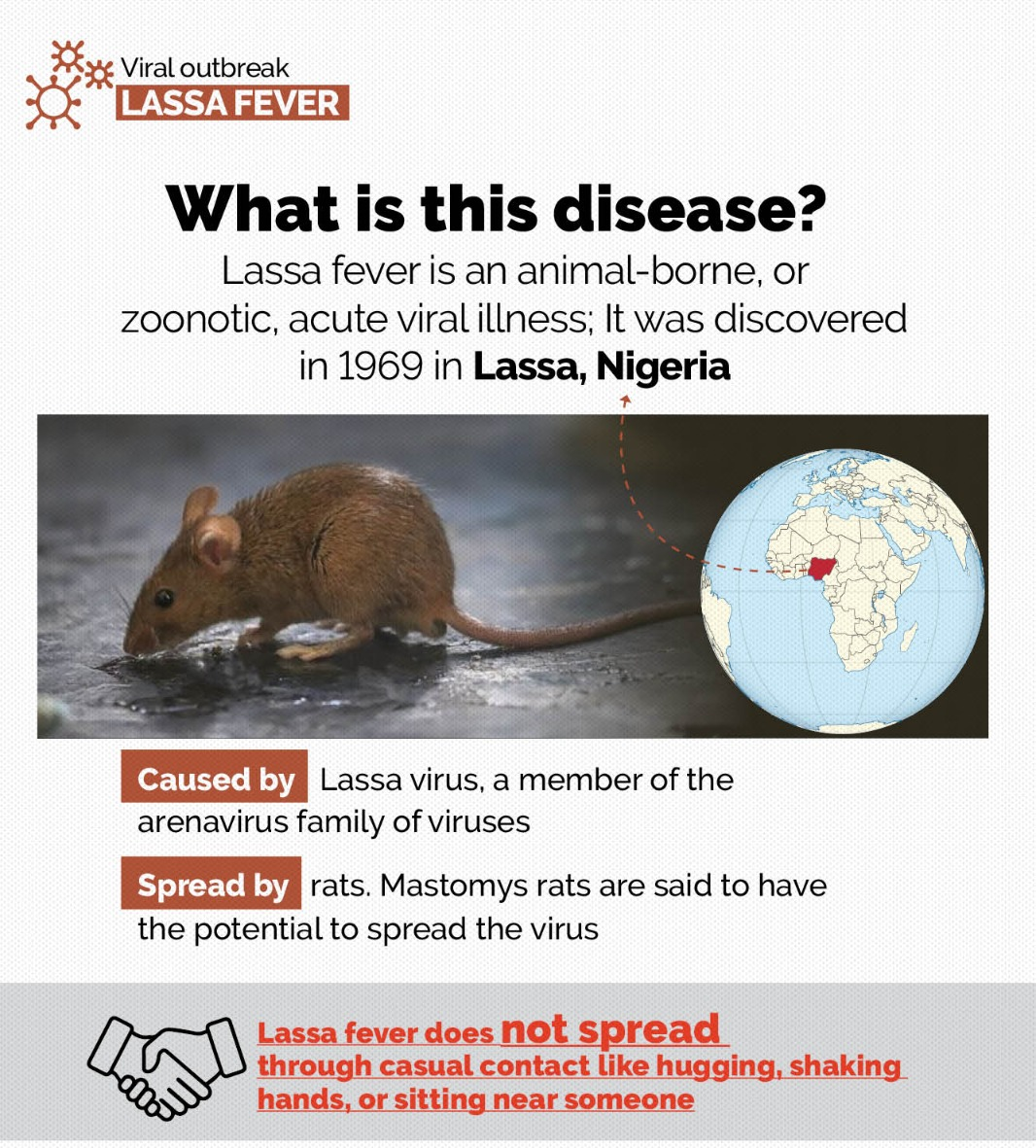Science & Technology
Lassa Fever
- 07 Oct 2022
- 6 min read
For Prelims: Lassa Fever, Zoonotic disease.
For Mains: Lassa Fever, Transmission and Treatment.
Why in News?
Recently a study has found that Climate change may aid the spread of Lassa fever, which is endemic to parts of west Africa, to the Central and Eastern parts of the African continent in the next 50 years.
What are the Findings?
- There would be a 600% jump in the number of people exposed to the virus that causes Lassa fever.
- The number of people at risk of exposure would rise to 453 million by 2050 and 700 million by 2070, up from about 92 million in 2022.
- An estimated 80% of infections are mild or asymptomatic. But the remaining 20 % can cause haemorrhaging from the mouth and gut, low blood pressure and potential permanent hearing loss.
- Temperature, rainfall and the presence of pastureland areas are key factors that contributed to the transmission of the Lassa virus.
- If the virus is successfully introduced and propagated in a new ecologically suitable area, its growth would be limited over the first decades.
What is Lassa Fever?
- About:
- The Lassa fever-causing virus is found in West Africa and was first discovered in 1969 in Lassa, Nigeria.
- The virus is a single-stranded RNA virus belonging to the virus family Arenaviridae.
- The fever is spread by rats and is primarily found in countries in West Africa including Sierra Leone, Liberia, Guinea, and Nigeria where it is endemic.
- Mastomys rats have the potential to spread the deadly Lassa virus.
- The death rate associated with this disease is low, at around 1%. But the death rate is higher for certain individuals, such as pregnant women in their third trimester.
- According to the European Centre for Disease Prevention and Control, about 80% of the cases are asymptomatic and therefore remain undiagnosed.
- Transmission:
- A person can become infected if they come in contact with household items of food that is contaminated with the urine or feces of an infected rat (zoonotic disease).
- It can also be spread, though rarely, if a person comes in contact with a sick person’s infected bodily fluids or through mucous membranes such as the eyes, nose or the mouth.
- Symptoms:
- Mild symptoms include slight fever, fatigue, weakness and headache.
- Serious symptoms include bleeding, difficulty breathing, vomiting, facial swelling, pain in the chest, back, and abdomen and shock.
- Death can occur from two weeks of the onset of symptoms, usually as a result of multi-organ failure.
- Treatment:
- The antiviral drug ribavirin seems to be an effective treatment for Lassa fever if given early on in the course of clinical illness.
- There are no vaccines currently licensed for the prevention of Lassa fever.
UPSC Civil Services Examination Previous Year Question (PYQ)
Q. Consider the following statements:
- Adenoviruses have single-stranded DNA genomes whereas retroviruses have double-stranded DNA genomes.
- Common cold is sometimes caused by an adenovirus whereas AIDS is caused by a retrovirus.
Which of the statements given above is/are correct?
(a) 1 only
(b) 2 only
(c) Both 1 and 2
(d) Neither 1 nor 2
Ans: (b)
Exp:
- Viruses are infectious particles that have the ability to infect both eukaryotic and prokaryotic hosts. They are host specific and mostly pathogenic, and thus considered as the common causative agents of many diseases. Viruses that infect human hosts can be categorized as adenoviruses and retroviruses
- Adenovirus is a type of virus that has no envelope whereas retroviruses are characterized as enveloped viruses. Adenoviruses have double-stranded linear DNA and are associated with two major core proteins. A retrovirus is a virus that uses RNA as its genetic material. When a retrovirus infects a cell, it makes a DNA copy of its genome that is inserted into the DNA of the host cell. Hence, statement 1 is not correct.
- Adenoviruses are common viruses that cause a range of illnesses. They can cause cold-like symptoms, fever, sore throat, bronchitis, pneumonia, diarrhoea, and pink eye (conjunctivitis). Whereas, retroviruses can cause several human diseases such as some forms of cancer and AIDS. Hence, statement 2 is correct.
- Therefore, option (b) is the correct answer.







